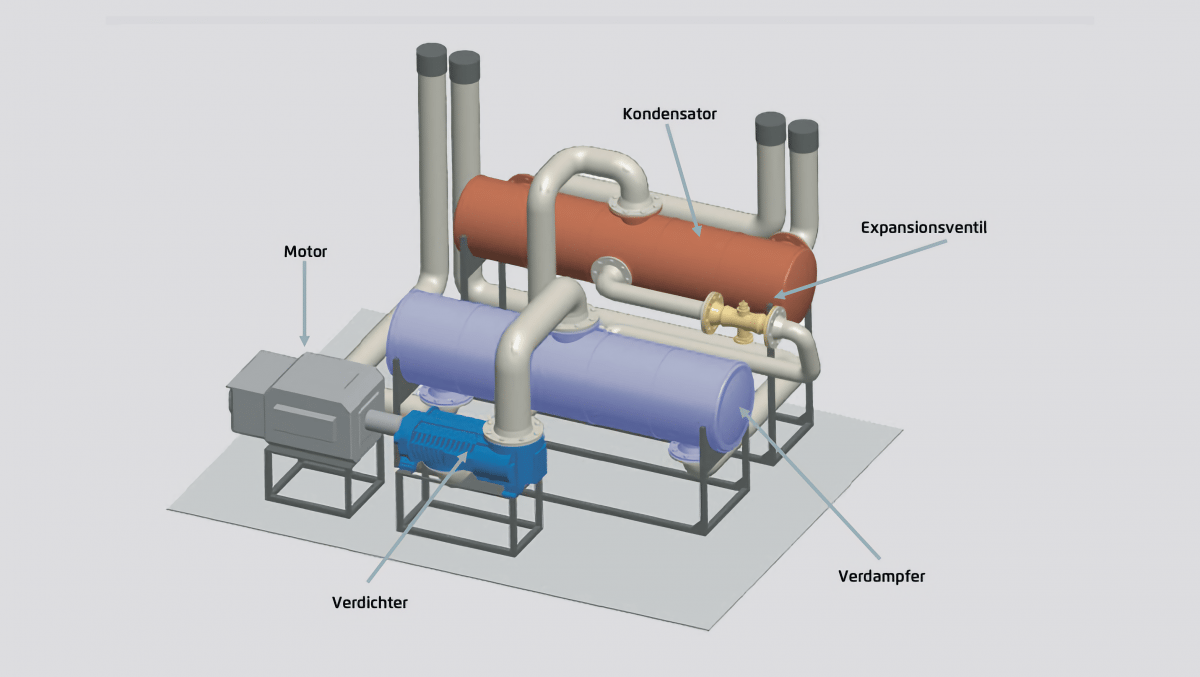A new study commissioned by the Agora Energiewende and conducted by Fraunhofer has found that heat pumps have the potential to meet the entire heat demand of up to 200 degrees Celsius in Germany. This would result in a significant reduction in natural gas consumption, saving three quarters of current usage. Large heat pumps that draw heat from sources such as geothermal energy, river or lake water, industrial waste heat, waste water, or mine water play a crucial role in this scenario.
According to the study, these large heat pumps, with their ability to reach flow temperatures of up to 200 degrees Celsius, could not only meet the heating and hot water needs of buildings but also provide around one-third of the industrial process heat required. However, in order to achieve this expansion, an annual thermal output of four gigawatts would need to be added by 2045. Currently, only 100 megawatts are installed in Germany, with another 600 megawatts under construction or in planning. This stands in contrast to Scandinavia, where large heat pumps are already widely used.
However, there are several challenges that need to be addressed for the widespread adoption of large heat pumps. One such challenge is generating the required high flow temperatures. Currently, only a few units on the market can reach temperatures above 130 degrees Celsius. The study highlights that technical innovations in compressors and refrigerants can enhance performance in terms of achieving higher target temperatures, improving efficiency, and increasing flexibility.
Another hurdle is profitability. The market for large heat pumps is currently characterized by customer-specific solutions, and to reduce costs, greater standardization and higher quantities are required. This, in turn, necessitates the right political framework, including better funding, faster approvals, and more binding targets. The ratio of electricity to gas prices also plays a crucial role in the economic viability of large heat pumps, which can be balanced through measures such as emissions trading or time-variable grid fees.
The study also identifies conflicts with combined heat and power plants, which are often fueled by natural gas. These plants have been funded using the same instruments as large heat pumps, creating unnecessary inefficiencies. The authors of the study argue that various funding options can hinder the transformation of heating networks and prolong the use of fossil-fueled CHP systems.
In addition to addressing these challenges, the study highlights the need for expanding heat networks to accommodate large-scale heat pumps. The study estimates that an average of 800 kilometers of new heat routes will need to be built every year by 2045, compared to a net increase of 423 kilometers in 2020. The study calls on the federal government to impose regulations for heat planning and energy distribution strategies on municipalities, ensuring transparency and enabling operators of heating networks to utilize waste heat sources effectively.
While heat pumps are one solution for heating networks, other alternatives such as deep geothermal energy can also provide high temperatures. Low-temperature networks with temperatures below 70 degrees Celsius can utilize sources like industrial waste heat directly. The study emphasizes the importance of conducting demand assessments and potential analyses to determine appropriate energy sources for heat supply.
Overall, the study highlights the significant potential of large heat pumps in meeting Germany’s heat demand. However, addressing technical challenges, ensuring profitability, and creating the right political and regulatory framework are crucial for the widespread implementation of this technology. Additionally, expanding heat networks and considering alternative heat sources will also play a vital role in achieving sustainable and efficient heating solutions.



